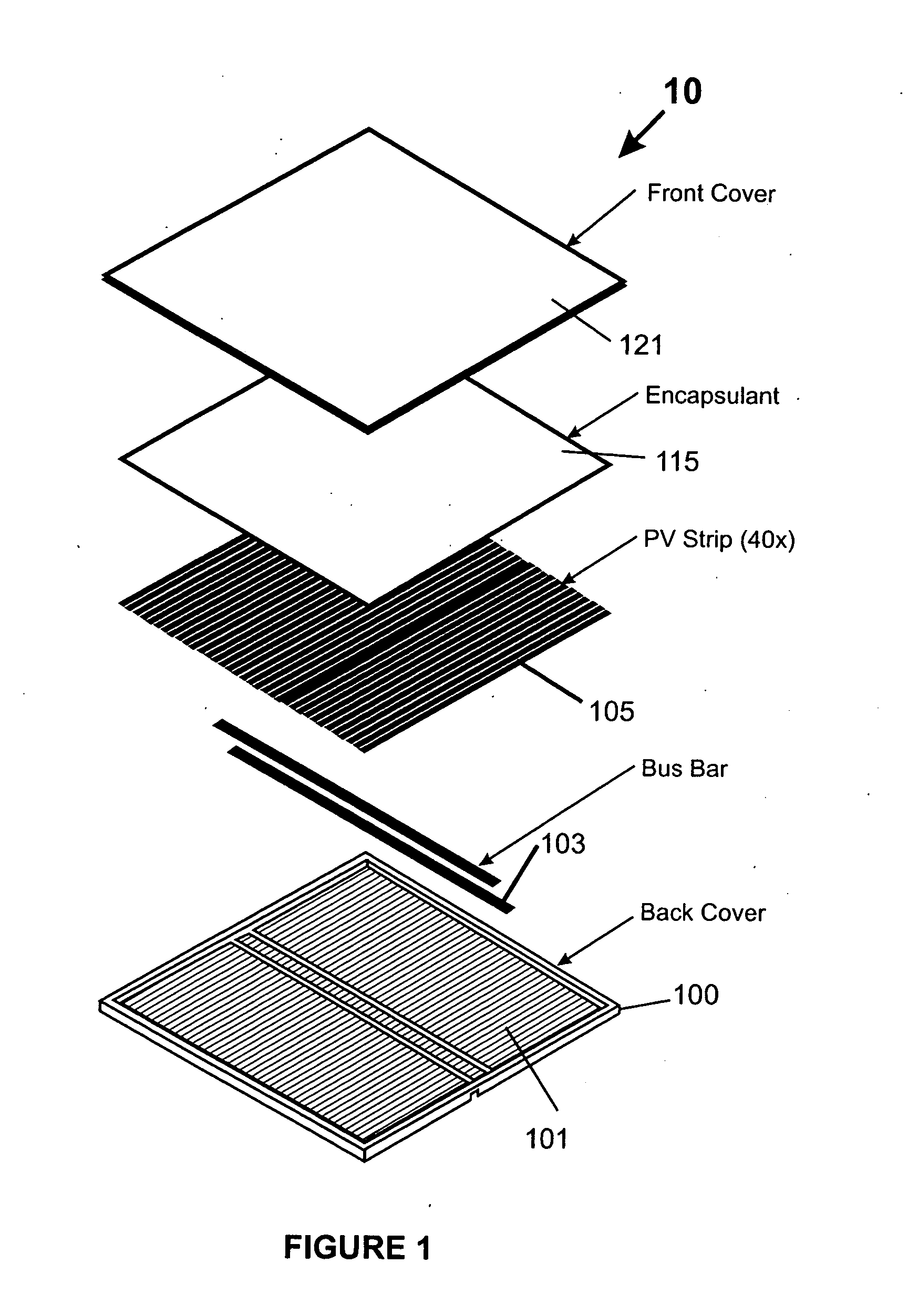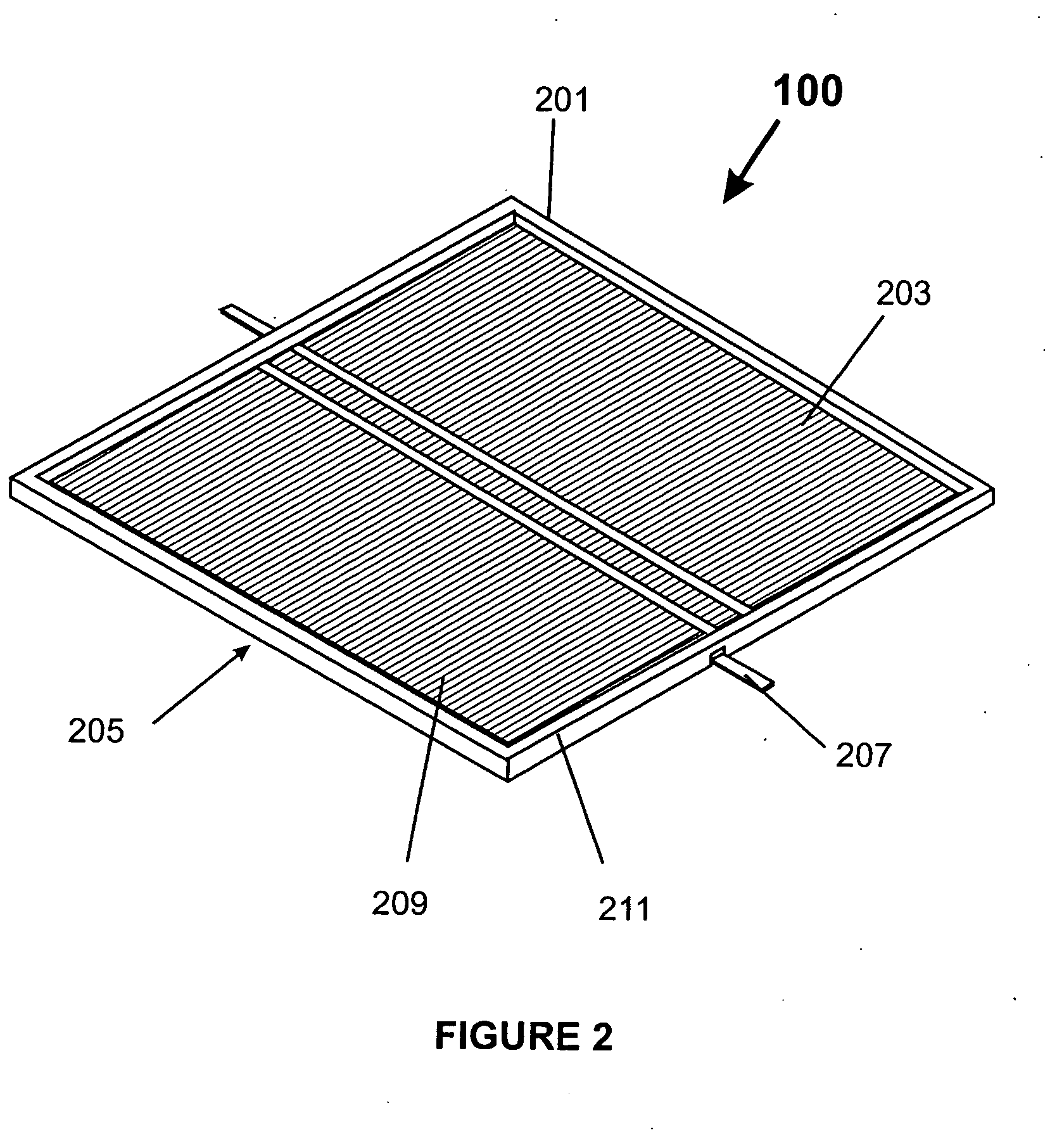Method and system for integrated solar cell using a plurality of photovoltaic regions
a solar cell and photovoltaic region technology, applied in the field of solar energy techniques, can solve the problems of inconvenient use, high energy consumption, and many limitations of solar cells, and achieve the effects of convenient use, less cost, and convenient handling
- Summary
- Abstract
- Description
- Claims
- Application Information
AI Technical Summary
Benefits of technology
Problems solved by technology
Method used
Image
Examples
examples
[0073] To prove the operation of the present methods and structures, certain details of the methods and structures in examples are provided. These examples are merely illustrations and should not unduly limit the scope of the claims herein. One of ordinary skill in the art would recognize many variations, alternatives, and modifications. These examples should also be read in reference to the other descriptions provided herein for clarification purposes. Details of these examples can be found below.
[0074] In general, the design and efficiency of the present solar cell method and structure occurs using combinations of elements and structures. As an example, the present concentrator is bound to the photovoltaic material characteristics according to a specific embodiment. Our present concentrator has achieved a low concentration ratio (e.g., 2 times, 3 times, 4 times) to reduce cost associated with the complexity of high concentrating systems. In a preferred embodiment, the low concent...
PUM
 Login to View More
Login to View More Abstract
Description
Claims
Application Information
 Login to View More
Login to View More - R&D
- Intellectual Property
- Life Sciences
- Materials
- Tech Scout
- Unparalleled Data Quality
- Higher Quality Content
- 60% Fewer Hallucinations
Browse by: Latest US Patents, China's latest patents, Technical Efficacy Thesaurus, Application Domain, Technology Topic, Popular Technical Reports.
© 2025 PatSnap. All rights reserved.Legal|Privacy policy|Modern Slavery Act Transparency Statement|Sitemap|About US| Contact US: help@patsnap.com



